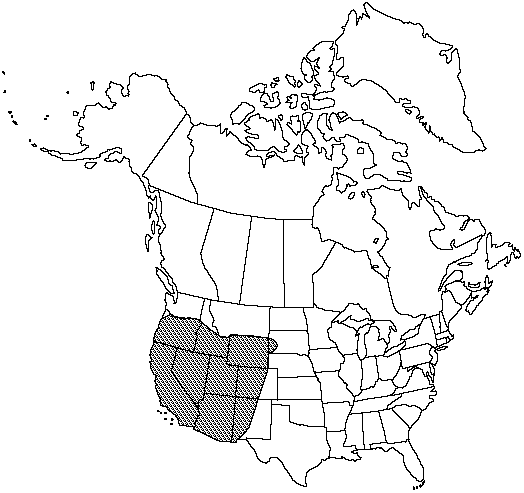Difference between revisions of "Athyrium filix-femina var. californicum"
Rhodora 19: 201. 1918.
FNA>Volume Importer |
FNA>Volume Importer |
||
| Line 26: | Line 26: | ||
|elevation=1000–3500 m | |elevation=1000–3500 m | ||
|distribution=Ariz.;Calif.;Colo.;Idaho;Nev.;N.Mex.;Oreg.;S.Dak.;Utah;Wyo. | |distribution=Ariz.;Calif.;Colo.;Idaho;Nev.;N.Mex.;Oreg.;S.Dak.;Utah;Wyo. | ||
| − | |discussion=<p>This southwestern variety, Athyrium filix-femina var. californicum, occurs at higher elevations than var. cyclosorum. Athyrium filix-femina var. californicum and var. cyclosorum are more closely related to each other than to eastern varieties. Distinctness between western varieties was shown by F. K. Butters (1917); F. S. Liew (1972) treated them as consubspecific.</p> | + | |discussion=<p>This southwestern variety, <i>Athyrium filix-femina </i>var.<i> californicum</i>, occurs at higher elevations than <i></i>var.<i> cyclosorum</i>. <i>Athyrium filix-femina </i>var.<i> californicum</i> and <i></i>var.<i> cyclosorum</i> are more closely related to each other than to eastern varieties. Distinctness between western varieties was shown by F. K. Butters (1917); F. S. Liew (1972) treated them as consubspecific.</p> |
|tables= | |tables= | ||
|references= | |references= | ||
| Line 49: | Line 49: | ||
|publication year=1918 | |publication year=1918 | ||
|special status= | |special status= | ||
| − | |source xml=https://jpend@bitbucket.org/aafc-mbb/fna-data-curation.git/src/ | + | |source xml=https://jpend@bitbucket.org/aafc-mbb/fna-data-curation.git/src/8f726806613d60c220dc4493de13607dd3150896/coarse_grained_fna_xml/V2/V2_673.xml |
|genus=Athyrium | |genus=Athyrium | ||
|species=Athyrium filix-femina | |species=Athyrium filix-femina | ||
Revision as of 15:50, 18 September 2019
Petiole 13–60 cm; scales brown or black, lanceolate or ovate-lanceolate, 7–15 × 1–4 mm. Blade narrowly elliptic to oblanceolate, 1–2-pinnate-pinnatifid, 25–130 × 8–25 cm, gradually narrowed proximally, broadest at or just above middle, apex acuminate. Pinnae sessile or very short-stalked, linear-oblong, apex acuminate. Pinnules linear-oblong or linear-lanceolate, base basiscopically cuneate, acroscopically truncate, ± auriculate, apex ± acute to acuminate. Rachis, costae, and costules with scales and usually with pale glands. Sori elliptic or oblong, straight, hooked at distal end, or horseshoe-shaped, medial; indusia dentate or ciliate with nonglandular marginal hairs as long as width of indusia. Spores brown.
Habitat: Moist woods, meadows, streambanks
Elevation: 1000–3500 m
Distribution

Ariz., Calif., Colo., Idaho, Nev., N.Mex., Oreg., S.Dak., Utah, Wyo.
Discussion
This southwestern variety, Athyrium filix-femina var. californicum, occurs at higher elevations than var. cyclosorum. Athyrium filix-femina var. californicum and var. cyclosorum are more closely related to each other than to eastern varieties. Distinctness between western varieties was shown by F. K. Butters (1917); F. S. Liew (1972) treated them as consubspecific.
Selected References
None.